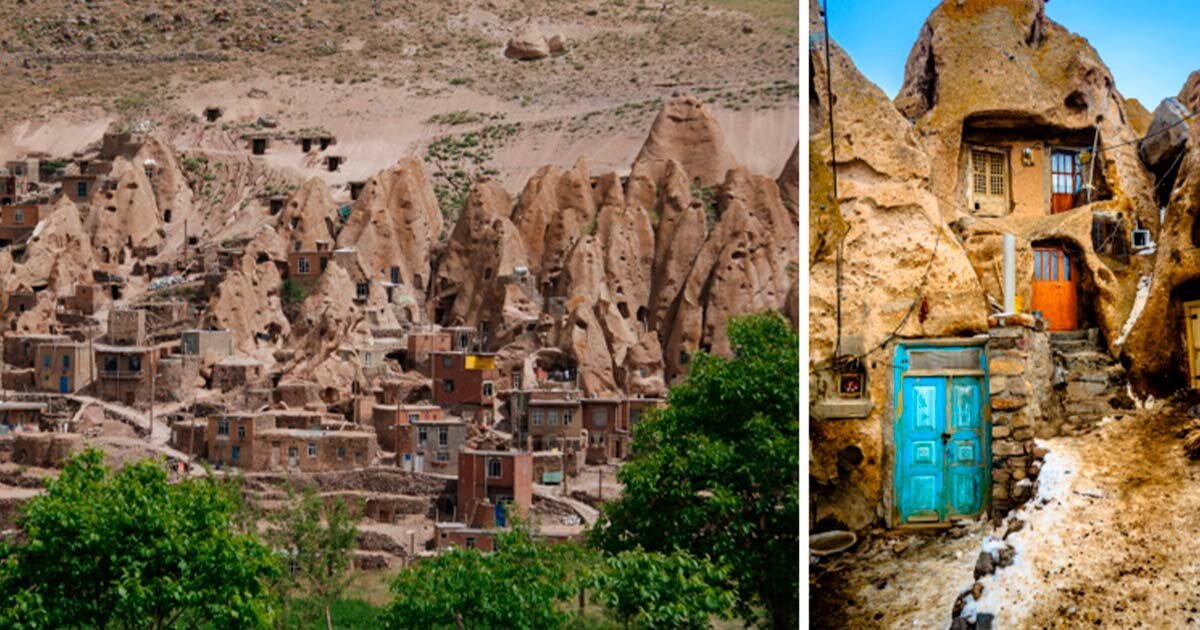Iran’s Kandovan is listed among world’s best tourism villages

TEHRAN – Iran’s Kandovan village has found its way into the list of 54 best tourism villages announced by the World Tourism Organization on Thursday.
Located in the northwestern province of East Azarbaijan, Kandovan is famous for its extraordinary architecture, where people have carved their homes into cone-shaped rocks, creating a spectacular landscape.
A typical home in Kandovan is essentially a cave that has been hollowed out of the rock, with a door and windows carved into the rock face. Their interiors are typically small, with one or two rooms decorated with traditional Iranian furnishings, such as rugs, cushions, and colorful tapestries, and they were equipped with simple amenities such as wood-burning stoves for cooking and heating.
Kandovan, which is Iran’s first village to gain the status, faced stiff competition from over 200 villages from around the globe, yet it triumphed to be counted among the world’s tourism gems.
To win the status, Kandovan had to meet rigorous criteria set by the UN tourism body, which included cultural resource preservation, economic sustainability, environmental and social responsibility, and a commitment to safety and security.
The name Kandovan is derived from the Persian word “kando,” meaning beehive, which perfectly describes the village's appearance, with its many cave houses.Launched in 2021, the Best Tourism Villages by UNWTO initiative is part of the UNWTO Tourism for Rural Development Programme, which is aimed to foster development and inclusion in rural areas, combat depopulation, advance innovation and value chain integration through tourism, and encourage sustainable practices.
In this third edition, 54 villages from all over the globe were selected from almost 260 applications, the Madrid-based organization said.
The villages were picked after rounds of follow-up assessments and discussions during the UNWTO General Assembly held in Samarkand, Uzbekistan, from October 16 to 20.
“Tourism can be a powerful force for inclusivity, empowering local communities and distributing benefits across regions,” UNWTO Secretary-General Zurab Pololikashvili was quoted as saying in the statement.
“This initiative acknowledges villages that have harnessed tourism as a catalyst for their development and well-being.”
Among other villages that have featured in the list include Dhordo in India, Barrancas in Chile, Biei in Japan, Cantavieja in Spain, Dahshour in Egypt, Dongbaek in the Republic of Korea, Douma in Lebanon, Ericeira in Portugal, and Filandia in Colombia, according to the statement.
Best Tourism Villages by UNWTO recognize outstanding rural tourism destinations with accredited cultural and natural assets, a commitment to preserving community-based values, and a clear commitment to innovation and sustainability across economic, social, and environmental dimensions, it said.
A glimpse of Kandovan
The name Kandovan is derived from the Persian word “kando,” meaning beehive, which perfectly describes the village's appearance, with its many cave houses. Before becoming a famous tourist destination thanks to its cave houses, Kandovan and its founders had a rich and fascinating history.
Archaeological evidence shows that Kandovan dates back some 10,000 years. The area around Kandovan was inhabited by many human groups over the millennia, including the Medes, Achaemenids, Parthians, and Sassanids, who left traces of their civilization in the form of ruins, pottery, and other artifacts.
It was only after the Mongol invasion of Persia (Iran) about 700 years ago that the present-day village of Kandovan was founded and has been inhabited ever since.
Over time, the village grew, with more and more people settling in the area, leading to the expansion and development of cave houses to accommodate larger families. Meanwhile, a canal system was created to bring water from nearby streams into the village for domestic and irrigation purposes.
The unique design and construction of the Kandovan cave houses are the main attractions in the village. The bazaar-shaped houses have been carved into volcanic ash and rock blocks by hand, using simple tools such as hammers, chisels, and hoes.
The inhabitants then used a combination of manual labor and basic tools to carve the cave houses, working slowly and carefully to create the desired shape and size.
They usually start by digging a small hole in the rock face, then gradually expand the space, removing the rock little by little. The process of building a house can take several years and is a laborious task that requires a lot of skill and patience.
Once the cave house was completed, they often added doors and windows, using the same technique to carve them into the rock.
For some travel enthusiasts, Kandovan pretty much resembles a Turkish counterpart; Cappadocia.
AFM
